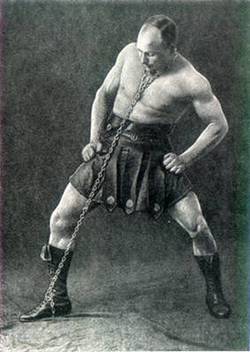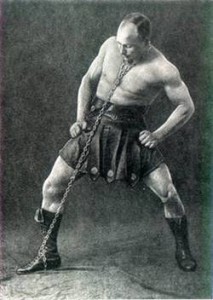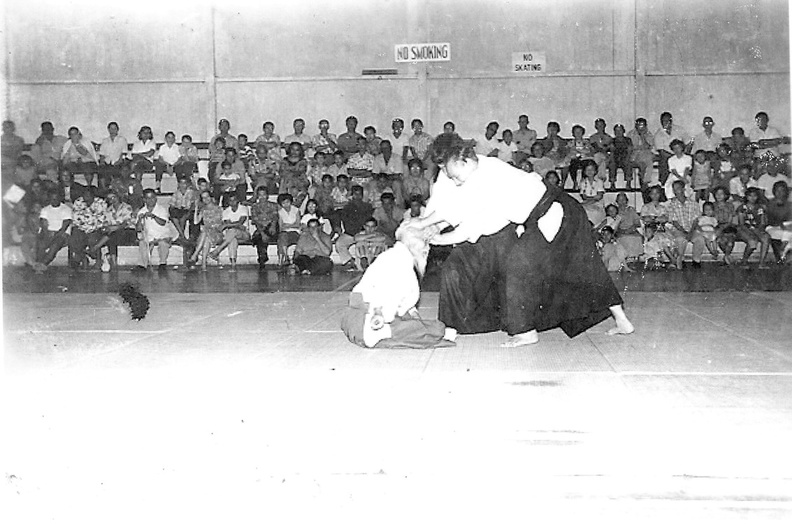Thanks to Benjamin Bergman for this great guest post!
In most training methods, you learn to train the big muscles in the major muscle groups or for most in the gym, they isolate the muscle to a certain degree. Many neglect those little muscles that keep you intact and help avoid injuries. When you do your training, keep to your goals as much as possible but don’t forget to add in a little supplemental training. Isometrics work those little muscles like there’s no tomorrow and the amount of angles you can hit are limitless.
A key ingredient to having successful training is to be able to hit your Range Of Motion as best as you can. Some people have terrible ROM because of either an injury, just learning the basics or because of the way their body functions at that particular ROM. We all have different body types and we don’t always have the same leverage as everyone else but Isometrics can help your ROM from a specific position and increase the speed and strength of that position to your best capacity. I had trouble at one time with pull-ups and since I’m a big guy (245+ lbs.) It’s difficult sometimes to do a good amount of them but what helped me was holding specific positions in the pull-up or chin-up and after a while I began to hit reps like crazy being my best at 21 chin-ups and 17 at Pull-ups.
Working muscles especially the big ones can be good but only to a certain degree. When you don’t work the tendons and ligaments as often as possible, you’ll find that your body doesn’t function the way you want it to. Take a bodybuilder for example, he works big muscles but forgets building the tendons and so has a greater risk for injury and it only takes one minor mishap and he’s out for the count. The old-time Physical Culturists used Isometrics to enhance their strength gains in ways very rarely seen since that time. Some of them were Gymnasts, Wrestlers, Bodybuilders, Acrobats and others but one way or another they all used Isometrics to give them that edge because of that positional strength and how it keeps the joints healthy.
One thing you’ll learn about Isometrics not too many these days tell you is the dense and hardened muscle you develop from working different types of Isometrics. You see no matter how you work specific muscles or specific positions whether you hold for a few seconds or a few minutes, the blood rushing through the body and stressing that particular muscle or position puts density into that muscle. This can help build bone density and keep you from having long-term pain in the joints. One of the perfect examples of hard and sense muscle is the late strongman Alexander Zass, his style of Isometrics came from being in a POW camp during the 1st World War. He was chained up and instead of sulking and feeling sorry for him he pushed and pulled on those chains from as many angles as he can muster. He eventually broke the chains and escaped the camp. The muscle he developed was extraordinary and looked like a man that was carved by Michelangelo himself and this type of training made him one of the strongest men who ever lived by bending bars, twisting steel and bending spikes like they were a clothes hanger.
Remember when I told you that you can hit an Isometric exercise from just about any angle? It’s true. One of the greatest wrestlers of his generation Karl Gotch once said “you always work your muscles from as many angles as possible.” This implies to not only dynamic movements but holding positions as well. When you hold a certain position say for instance a curl, you can work that particular exercise in the main three positions (down, middle and upper) but when you turn it in a different angle say if your arm is turned towards away or within the torso you’re still working a curl but your now working different muscles within that curl. You can do this with any exercise doesn’t matter.
Now I must warn you, doing Isometric Training in and of itself isn’t the only way to get super strong but when you add them in your current training, you can go beyond plateaus and this can help your ROM in a particular exercise like I’ve said before. A key thing is to use your imagination, think of what you want to improve and see in your mind’s eye how strong you want to be. One of the things I like to think of when I do Isometrics is when I work on my Arm Wrestling and I put a belt around a tree, I picture as if that tree was going to come down, I see it as a giant redwood and by the power of my own hands that tree will fall and I pull at times with everything I have and just want to toss that sucker right over the fence.
PT Barnum once said “Imagination is the elixir of life.” When you use your imagination no matter what it is, your results can come quicker, your body will move in a different way and your strength will skyrocket in ways you never thought of before. Make it a habit to live your training as if it was an adventure. Sure Isometrics are just holds but pictures how you use those holds, where you are and what is happening. You’d be surprised what you might find.







3 Comments
Frank DiMeo
March 6, 2013Another very informative article ! Thanks !
Ron Forzani
March 10, 2013Jon loved the article by Ben Bergman. Very informative.
Jake Long
December 14, 2013That’s a great story about Alexander Zass. He’s been my favorite person to research lately. From everything I’ve learned so far, you couldn’t ask for a better fitness role model. Build strength, endurance, and muscles, the old time strongmen had it right.
Leave A Response